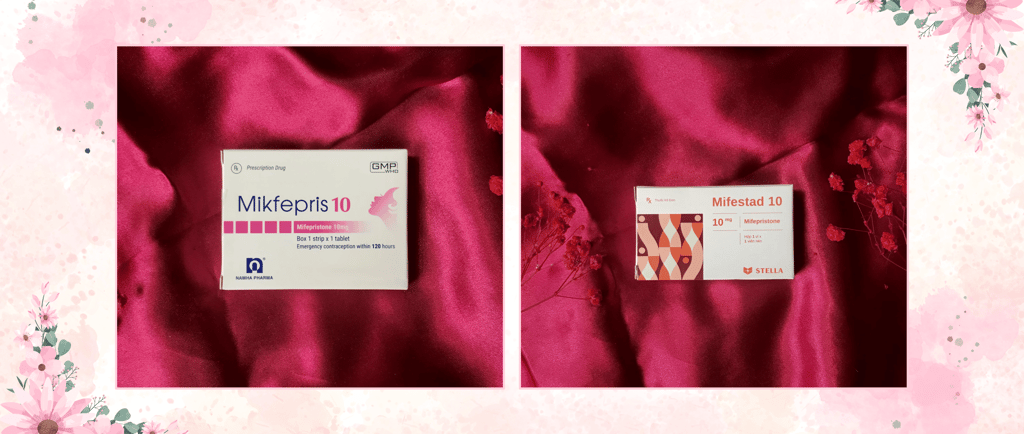
call, viber, or WHATSAPP +63976-170-9480 now
Mifepristone 10-Based Morning After Pill: What You Need to Know
Learn all about Mifepristone 10-based morning after pills in this comprehensive guide. Understand how it works, how to use it effectively, potential side effects, drug interactions, and important precautions. Discover trusted products like Mifestad and Mikfepris to make informed decisions about emergency contraception.
MORNING AFTER PILL
11/16/20245 min read


In today's rapidly evolving world, the significance of reproductive health cannot be overstated, making it important for individuals to have a thorough understanding of emergency contraception choices at their disposal. Among these choices, the mifepristone-based morning-after pill has garnered increasing interest for its effectiveness and accessibility. This detailed guide seeks to deliver a thorough analysis of all facets related to mifepristone, shedding light on its process of action, necessary precautions and considerations when utilizing it, as well as spotlighting two prominent products available in the market, Mifestad and Mikfepris.
Understanding emergency contraception is crucial in modern society as individuals navigate busy lifestyles and unexpected circumstances. By exploring the complexities of the mifepristone-based morning-after pill, individuals can make informed decisions about their reproductive health in times of need. This guide offers an extensive examination of mifepristone, equipping readers with comprehensive knowledge to make informed choices regarding emergency contraception.
Whether delving into the science behind mifepristone's effectiveness, outlining practical guidelines for consumption, or evaluating the diverse options such as Mifestad and Mikfepris, this guide aims to empower individuals with essential information concerning emergency contraception. By explaining the complexities of mifepristone-based options, this resource serves as a valuable tool for those seeking to navigate the landscape of reproductive health with confidence and understanding in today's fast-paced world.
How to Take Mifepristone as Emergency Contraception?
Taking a mifepristone-based morning after pill involves a simple but specific process:
Dosage: The standard dose for emergency contraception varies, but it is usually a single pill containing 10 mg of mifepristone.
Timing: For maximum effectiveness, take the pill within 120 hours (5 days) after unprotected intercourse. While it is effective throughout this window, taking the pill as soon as possible ensures the best results, as its effectiveness decreases with time.
Instructions: Swallow the pill with a glass of water. To minimize the risk of nausea, it is best to avoid taking it on an empty stomach. If you happen to vomit within two hours of taking the pill, you should take an additional dose to ensure its effectiveness.
What is Mifepristone?
Mifepristone is a synthetic steroid that acts as an antiprogestogen. It was initially developed for medical abortion but has since been recognized for its effectiveness in emergency contraception. It’s important to distinguish between the two main dosages: Mifepristone 10 mg and Mifepristone 200 mg. The 10 mg dosage is used as a morning after pill to prevent conception after unprotected intercourse, while the 200 mg dosage is used for medical abortion to terminate an established pregnancy.
By blocking the hormone progesterone, Mifepristone 10 mg prevents the processes required for conception, such as follicular maturation and ovulation. On the other hand, Mifepristone 200 mg works by disrupting the hormone necessary to maintain a pregnancy, causing the endometrial lining to shed and expelling the pregnancy tissue.
In this guide, we will be focusing primarily on Mifepristone 10 used as a morning after pill.
What to Do After Taking Mifepristone?
Once you have taken the mifepristone-based morning after pill, follow these steps:
Monitor Your Body: Monitor your body carefully for any immediate side effects, including nausea, abdominal pain, or dizziness. It’s important to pay attention to how you feel and note any reactions, as this helps ensure prompt response if symptoms persist or worsen.
Expect Changes in Your Period: After taking Mifepristone 10, it is normal to experience some changes in your menstrual cycle. Your period may arrive earlier or later than expected, and the flow might be heavier or lighter than usual. These alterations are a typical response to the hormonal effects of the medication and should return to normal in subsequent cycles. If you notice persistent irregularities or have any concerns, consider consulting a healthcare provider for guidance.
Use Additional Protection: Taking Mifepristone 10 as emergency contraception does not offer protection against future instances of unprotected intercourse. Therefore, it is essential to use additional reliable contraceptive methods, such as condoms or other barrier methods, until your next menstrual cycle begins. This step helps ensure continuous protection and reduces the risk of unintended pregnancy.
Seek Medical Advice if Necessary: If you encounter intense or extreme pain, abnormally heavy bleeding, or any symptoms of an allergic reaction, it is crucial to promptly seek assistance from a healthcare provider. Do not delay in reaching out for medical help if you experience any of these symptoms, as they may indicate a serious health issue that requires immediate attention. Your well-being is paramount, and it is essential to address any concerning symptoms promptly to ensure that you receive the necessary care and support.
Contraindications for Mifepristone-Based Emergency Contraceptives
Mifepristone-based emergency contraception is not suitable for everyone. It is contraindicated in individuals with:
Known hypersensitivity to mifepristone
Established pregnancy
Chronic adrenal failure
Renal or hepatic impairment
Inherited porphyrias
Prolonged vaginal bleeding
If you belong to any of these groups, talk to your healthcare provider about other emergency contraceptive choices that may be better for you. Your healthcare provider can help you find a different option that is suitable for your needs.
Potential Drug Interactions
Certain medications can interfere with the effectiveness of mifepristone or increase the risk of side effects:
Aspirin and NSAIDs: These can potentially reduce the effectiveness of mifepristone by altering its absorption and mechanism.
Corticosteroids: Mifepristone’s antiprogestogen properties may be counteracted by long-term corticosteroid use.
Anticoagulants: Be cautious as mifepristone can increase the risk of bleeding.
Always inform your healthcare provider about any medications or supplements you are currently taking.
Overdose and Safety
Accidentally taking more than the recommended dose of mifepristone can increase the likelihood of severe side effects:
Symptoms of Overdose: Intense nausea, vomiting, abdominal pain, or heavy vaginal bleeding.
Action to Take: Seek immediate medical assistance if you suspect an overdose.
Side Effects
While mifepristone is generally well-tolerated, users should be aware of possible side effects, including:
Common Side Effects: Nausea, headache, dizziness, and fatigue.
Gastrointestinal Issues: Stomach cramps and diarrhea.
Menstrual Irregularities: Changes in the timing or intensity of menstrual periods.
Mifepristone-Based Products
For those considering mifepristone-based emergency contraception, we offer:
Mifestad: A trusted and effective option known for its high efficacy.
Mikfepris: Another reliable choice that meets quality standards and ensures peace of mind.
Both products are available for purchase on our website and come with detailed instructions to help you make an informed decision.
Conclusion
Mifepristone-based morning after pills like Mifestad and Mikfepris provide a dependable option for emergency contraception. However, it’s essential to understand how they work, how to take them properly, and the associated precautions. Always consult with a healthcare provider if you have any concerns or pre-existing conditions that may affect the use of mifepristone. Stay informed and take charge of your reproductive health with confidence.
How Does Mifepristone 10 Work?
Mifepristone’s effectiveness as an emergency contraceptive is due to its ability to disrupt key reproductive processes. Here's how it works:
Disrupts Follicular Maturation: Mifepristone 10 interferes with the natural development of ovarian follicles, effectively stopping the release of an egg (ovulation). This preventive action is most beneficial when taken at an early stage, before the ovulation process begins.
Inhibits the LH Surge: It disrupts the luteinizing hormone (LH) surge, a key hormonal trigger essential for ovulation, effectively preventing the release of an egg and lowering the chances of fertilization after unprotected intercourse.
Endometrial Changes: For users taking the pill nearing the 120-hour mark or those whose ovulation has already started, Mifepristone 10 compromises the hormonal support necessary for maintaining the endometrial lining. This leads to the degeneration and shedding of the lining, which in turn prevents the implantation of a fertilized egg. Essentially, even if fertilization has occurred and the egg meets the sperm, the pregnancy will not continue because the uterine environment is no longer supportive of implantation.
These actions make Mifepristone 10 a highly effective and dependable option for preventing pregnancy after unprotected intercourse or contraceptive failure. This emergency contraceptive is particularly beneficial for women who are approaching or have reached their ovulation day, as well as for those seeking a solution beyond the typical 72-hour window. By understanding how Mifepristone 10 functions, individuals can appreciate its unique capability to prevent pregnancy even in situations where other methods may be less effective.
Empowerment
Your trusted source for women's health solutions.
Privacy
Trust
info@morningafterpillcebu.com
Morning After Pill Cebu
© 2025. All rights reserved.
